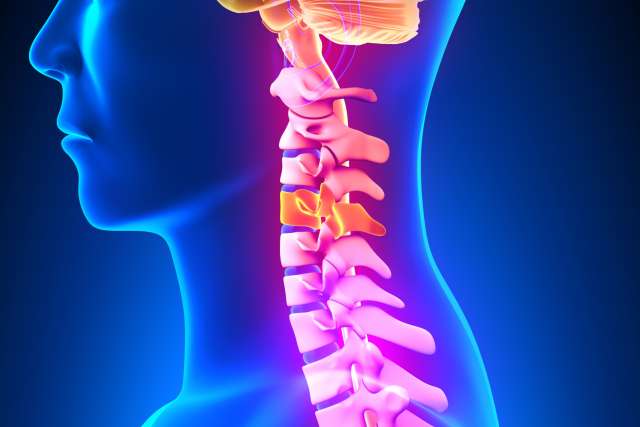Dear Doctors: I had severe pain in my neck and couldn't turn my head. I saw an orthopedist, and she diagnosed me with bone spurs on my vertebrae. Apparently, my choices are doing physical therapy, seeing a pain specialist or having surgery. Can you please talk about these options?
Dear Reader: Bone spurs, which are also known as osteophytes, are rounded, bumpy or knobby overgrowths that can develop on the surface of a bone. They form as the body's response to injury or skeletal instability and as a result of various forms of arthritis.
Osteophytes typically form at or near the juncture of a bone and a joint and in areas where a ligament or tendon attaches to a bone. When bone spurs occur in the vertebra of the neck, which is the cervical spine, they are known as cervical osteophytes.
In and of themselves, these bony growths are not painful. However, depending on their size, number and location, they can crowd or touch a nerve or the spinal cord. This can lead to symptoms such as numbness, tingling, muscle weakness, headache and dull, sharp or radiating pain.
Treatment for cervical osteophytes usually begins with a conservative and nonsurgical approach. This includes the use of medications and ice packs, along with rest, to reduce inflammation and manage pain. When over-the-counter drugs don't bring relief, prescription pain relievers, as well as stronger anti-inflammatories, may be recommended. Another option is the use of corticosteroid injections, which can also be effective for inflammation.
Problems with posture and alignment and deficits in structural support often play a role in the development of bone spurs in the neck. For those reasons, physical therapy to strengthen muscles that support the neck can be helpful. A physical therapist will also be able to evaluate your posture as you sit, stand and move. They can identify any bad habits that have developed and pinpoint potential movement triggers that make the symptoms worse. For some people, several sessions of physical therapy can bring relief. For others, it can become an ongoing part of managing the condition. Your doctor may also recommend integrative treatments, such as acupuncture or chiropractic adjustment, which can increase mobility and manage pain.
When the symptoms are severe enough and have failed to improve with more conservative treatment, surgery may become an option. There are several approaches, including some that are minimally invasive. Each involves the removal of excess tissues that are impinging on nearby nerves or the spinal cord. In some cases, it is possible that a compressed or damaged disc may need to be removed. The specifics of each person's condition, which include where on the cervical spine the bone spurs are located, will determine the optimal approach.
While this type of surgery can offer significant relief, there are also risks involved. These include nerve damage, blood clots, infection and injury to the surrounding tissues. It is always important to get a second opinion when opting for surgery, and to take great care in selecting a surgeon who is experienced in the intended procedure.
(Send your questions to [email protected], or write: Ask the Doctors, c/o UCLA Health Sciences Media Relations, 10960 Wilshire Blvd., Suite 1955, Los Angeles, CA, 90024. Owing to the volume of mail, personal replies cannot be provided.)





